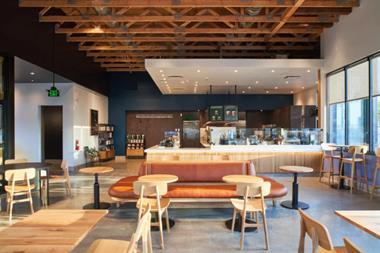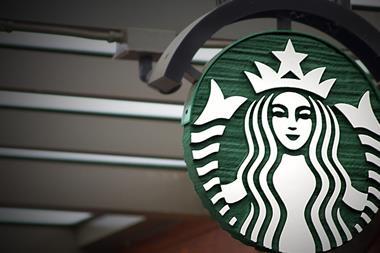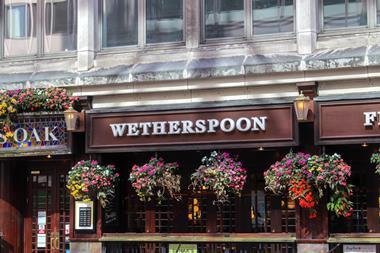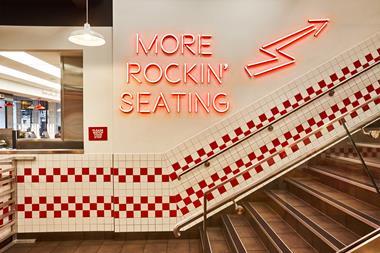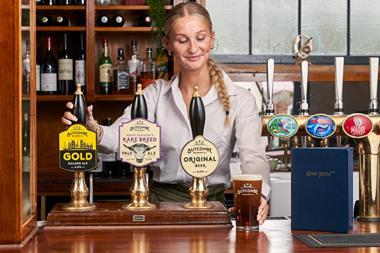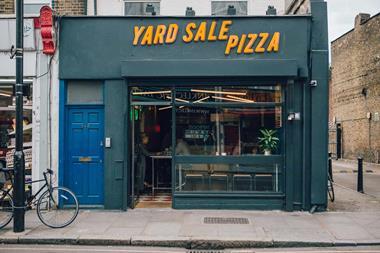So current rent levels are unsustainable but are we heading for a recalibration? According to the latest insight, our high street sandwiches and coffees are full of salt and sugar respectively, but does the sector wait for Government target setting on health issues or make the first move itself and why new M&B chief executive Phil Urban looks like he is getting to the heart of the matter.
Some sober comments have been flying around the sector since the start of the year, whether that was centred around people, property or the wider economy. There is a school of thought that 2015 may in time be seen as a peak year for the UK’s eating and drinking-out sector in this current economic cycle and that the next 12-18 months is all about running to a standstill to survive as the market tries not to bust at the seams.
Last week, serial investor Luke Johnson talked of “storm clouds gathering” with the Bank of England already lowering growth expectations for this year, and expectations that it might lower them again. He said: “I think now is not the time to be signing the really crazy rental deals and to take on very high levels of leverage and to just be somewhat more thoughtful about one’s expansion plans.”
Indeed, he went even further on the topic of rental levels by saying that unsustainable rent increases, particularly in central London, along with minimum wage increases, are a “huge threat to the prosperity of our sector”, attributing most of the blame to landlords and property agents in the process.
Speaking to M&C late last year, his former business partner Hugh Osmond, the owner of Strada, believed the rents currently being talked about across the restaurant sector for one are a risk for everyone, including the landlords. He said: “If you are building a portfolio that is sustainable in the long-term, the percentage of profit that is made by the operator and that made by the landlord, given the respective risks and amount of work done by each party, has to be equitable. I think some of the rents currently being talked about are a risk for everyone, including the landlords.”
So are we heading for a recalibration of the property market or will the sector stablise itself in due course? The current race for space and acceleration of rental growth in the restaurant sector has correlations with previous cycles on the High Street. At various times over the years, card shops, coffee shops and mobile phone operators all paid in excess of the prevailing tone to secure space ahead of their competitors. Sustainability was ultimately achieved but not without casualties. One leading property advisor told me: “What we need is stabilisation without a crash - we need revisions to Code of Practice on Business Leasing and mid quartile rent comparables.”
However, many argue that it is difficult to see this happening anytime soon with the level of demand each and every time a half-decent property comes to the market remaining high. Although, it seems some landlords have taken Osmond’s cue. Tracey Mills, executive director, Development & London Estates at Davis Coffer Lyons, says: “We have seen most central landlords go across to some form of turnover contribution albeit at present still with a market base rent – and in most instances when the landlord has chosen the end tenant well, they will trigger the turnover thresholds. We would hope that this becomes more commonplace in order to achieve/maintain those eclectic mixes of cuisines and concepts within estates and any single ownerships, on the approach to institutional valuation is likely to have to change in order to do so.”
Whilst pointing the finger at landlords and agents, Johnson did admit that operators/investors have brought current rent levels on themselves by over-expanding and pouring too much capital into the sector. That point is hard to argue with and it is part of what makes it difficult to see stabilisation in the market place happening soon, especially in London, but also increasingly in other major UK cities, whilst the level of demand each and every time a half-decent property comes to the market, continues to remain high.
At present for every failure there is still a handful or more operators, be it established or first time entrants looking to take that space on convinced they can make it work and willing to pay a premium to be proved wrong or right. However, the quicker the conversation starts between all parties on sustainable way forward the less pain we are likely to see when interest rates rise and you have a bit of a downturn in operating profitability.
Targeted approach
At the start of the week it was too much sugar and by the end of the week it was too much salt, either way of the UK’s leading high street coffee, café and sandwich chain has been caught in the health lobby’s sights as more and more people and organisation enter the debate over the country’s obesity problem.
Earlier this week, news filtered out that the Government’s already delayed childhood obesity strategy will not be published until the summer, with health campaigners saying it is unlikely to include a much debated sugar tax. “It is a very complex issue and there is a lot of work going on to get it right,” said a Department of Health spokesperson. “There are a lot of different issues that need considering and we want to make sure it is right when we put it out. David Cameron and Jeremy Hunt have said they want it to be a game-changing moment.”
Rather than apply a levy, it is thought that the Government will instead look to put pressure on the food and drinks industry to act by cutting sugar and making products healthier, with the threat of fiscal action if they do not comply. It is thought that this will include setting targets for the industry to meet. Rather than wait for these targets to be handed down, it is thought that the British Retail Consortium (BRC), which represents supermarkets and the likes of Starbucks, Costa, and Subway, is gearing up to campaign for reductions in sugar to be made statutory in the hope of creating a level playing field. As one commentator pointed out: “It reminds me of when JD Wetherspoon came out in favour of total smoking ban.”
Urban education
The idea that Mitchells & Butlers (M&B) should dispense with its Heartland estate has been floated by observers several times in the past few years. Last year in conversation with M&C, former chief executive Alistair Darby counters the suggestion, highlighting the important role the pubs in that segment play. He said: “Our Heartland estate is a very big part of our business, it is all freehold, very valuable bricks and mortar, well-sited pubs, with big car parks and lots of facilities. Our tail to other people would be high-quality assets, but I don’t see it as a tail at all. It is a collection of really good freehold community pubs where the trading has been tough in the past three or four years because the consumers that use those pubs have been under enormous pressure, but they are going to get better off and come back.”
One of the consequences of the past four to five years is that consumers have become incredibly savvy. Everybody will search to buy something on a deal without any embarrassment. In that respect, M&B’s Heartland estate, which includes its Sizzling Pubs and Crown Carveries value-led formats as located in the hardest trading environment. There has also been an enormous amount of supply capacity coming into that market – new-build pubs, Hungry Horse refurbishments and new formats such as Flaming Grill. With further capacity and capital coming into what Darby described as “brutal market”, it was imperative that his successor Phil Urban picked up the baton and placed further emphasis on improving performance across pubs that remain “incredibly cash generative”.
Over the past year M&B has invested in two new concepts within its Heartland estate - Sizzling Pizza & Carvery designed as “an innovative solution to move our Crown Carveries business forward”, while Sizzling Pub & Grill was seen as an extension of the existing Sizzling Pubs offer. M&B says it has seen an increase in footfall across the locations currently converted amounting to a 55% increase in sales.
Urban says: “There’s no great secret to a successful pub - it’s about giving your customer a nice environment and a quality food and drink offer. That might be a bit of a simplification but sometimes I think it’s good to crystallise exactly what it you’re trying to achieve. Under the Sizzling brand that’s what we have effectively done. In Crown Carvery we did two Sizzling Pizza & Carvery. The results from that so far have been absolutely fantastic so we are going to extend that. Are we going to do more of those sorts of things? Absolutely. The work on the Sizzling Pizza and Bar & Grill happened within the core business and I see that continuing because in that Heartland business we have got high street sites and old legacy brands we need to find a similar solution for.”
The latest step will be the trial of the company’s own coffee blend Brood, which has been developed in collaboration with coffee roaster Bewley’s. It is thought that innovation across the Heartland estate’s drinks offer will be next on the list of priorities. Urban, as Darby knew before him, knows that a strong Heartland estate will make it easier to grow M&B’s overall business. He has made a good start along that path, now all he has to do top up the company’s depleted talent pool.


























